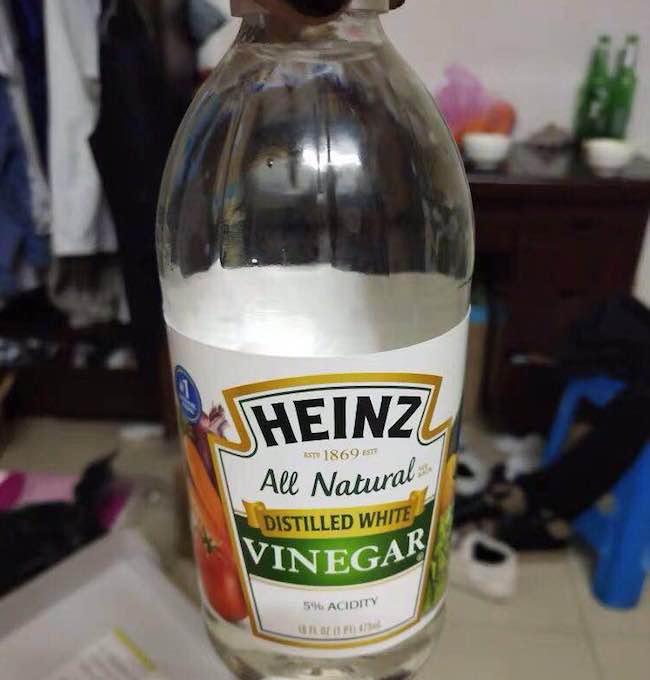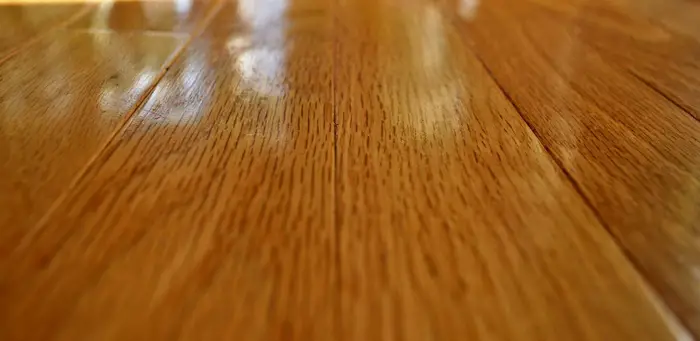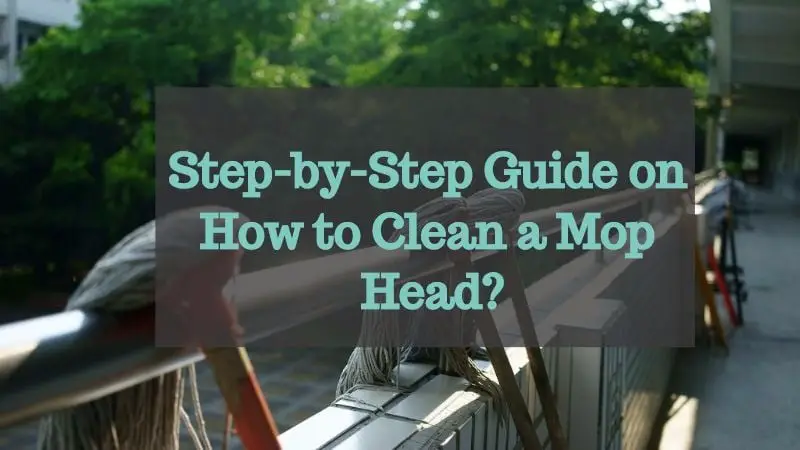There are many great uses of vinegar. In fact, it is a staple in most home. You can use it in the bathroom, kitchen, beauty regimen, and cleaning routine, among many other areas. Because of its inexpensive and versatile nature, it is a must-have in any pantry.
I’m sure you know many uses of vinegar, but it doesn’t hurt to add more knowledge.
FYI: many people and animals dislike the smell of vinegar, but its smell disappears once it has dried up; therefore, don’t fear using it.
Let’s get started;
Uses of Vinegar in the Garden
 Want your flowers to shine and last longer. There is no need to use synthetic plant food when you have vinegar; add vinegar and sugar in water and mix. The sugar nourishes the flowers, while vinegar will repel bacteria.
Want your flowers to shine and last longer. There is no need to use synthetic plant food when you have vinegar; add vinegar and sugar in water and mix. The sugar nourishes the flowers, while vinegar will repel bacteria.- Neutralize your soil. In the areas of North America, you find hard water. Hard water may affect the soil PH making it too alkaline. If you test your soil and find out that it is too alkaline, spray vinegar on the soil to reduce the alkalinity.
- Kill and control needs. Using a spray bottle, spray vinegar mixed in some water on your walkways to kill weeds.
- Eliminate skunk odor. If your dog or cat has a stinky coat, add some vinegar to their bathing water and remember to rinse them thoroughly.
- Cleaning mower blades. Vinegar is good in cleaning stains and rust and thus can help clean mower blades that are full of grass stains. After washing your blades, soak a piece of clothing in white vinegar and wipe each blade. To avoid future stains, do this frequently before placing your mower blades in the shed or garage. Also, it’s always nice to have the cleanest lawn mower on the block.
- Repel ants. Are ants disturbing you at home? Kick them out by spraying vinegar around your window and door frames. This applies to fleas as well.
- Clean patio furniture. You can use a vinegar solution to fight mildew in your outdoor furniture.
- Give seeds with the hard shell a head start. After rubbing seeds such as gourds or passionflower with sandpaper, soak them in a solution of apple cider vinegar and water.
- Stop the yellowing of leaves. If you notice your azaleas or hydrangeas start yellowing, it might be due to PH. Apply this solution once a week. 2 tablespoons of apple cider vinegar and 1 quart of water.
- Deter animals and pets. If you want to keep pets or animals from trekking through your vegetable or herbs garden, place rags soaked in vinegar on stakes around your garden. Ensure you re-soak them every ten days.
- Cleaning bird droppings. You can clean up stubborn bird droppings easily with vinegar. Just spray full strength vinegar on the spot with bird droppings and leave it for 30 minutes before washing it away.
Uses of Vinegar in Pet-Related Cleaning and Care
 Eliminating pet waste stains. If there is a pee stain somewhere, flush the area with hot water and apply a diluted solution of water and vinegar. Then rinse and give it time to dry.
Eliminating pet waste stains. If there is a pee stain somewhere, flush the area with hot water and apply a diluted solution of water and vinegar. Then rinse and give it time to dry.- Cleaning your fish tank. You can clean yucky deposits in your fishbowl using vinegar. After cleaning, make sure to rinse properly to get the right PH before introducing new fish to your bowl.
- Neutralize pet odors. To clean pet odors from carpets and furniture, sprinkle some baking soda over the area and allow it to settle overnight. Vacuum the next day and apply vinegar, then rinse.
- Neutralize odor in your kitty litter box. After emptying your kitty litter box, pour in vinegar and cover the box for about 30 minutes. Rinse well after that because cats hate the smell of vinegar.
- Deter Chewing. Does your dog have a bad habit of chewing on electrical cords? Apply a small amount of apple cider vinegar on your electrical lines. However, only do so when the cord is unplugged.
- Cleaning bird bath. If you have a birdbath, be sure to wash it thoroughly with vinegar once in a while so that birds can keep coming to that spot.
- Conditioning your dog’s hair. Apply apple cider vinegar on your dog coating to remove soap residues and improve its skin if it has flaky skin. Not only will vinegar condition your dog coating, but also repel insects such as ticks and fleas.
Uses of Vinegar in the Garage and Your Car
- Reduce frost by applying a coating on your car windscreen. If you are in an area that experiences frosts or harsh winters, you can apply a thin coating of vinegar on your car windows to prevent frosting.
- Polishing chrome. You can easily and quickly remove chrome deposits by using vinegar.
- Removing rust- if your bolts or tools have rust, soak them in diluted vinegar overnight then scrub them gently in the morning.
- Cleaning concrete floor. If you see rust spots on the floor, you can use lemon and white vinegar to clean them.
- Revive paintbrushes. If you have brushes that have dried on paints, you can revive them by soaking them in vinegar. If the dried on paint doesn’t go away, boil them in 1-2 cups of vinegar before washing them in hot, soapy water.
- Open stubborn screws. If a hinge or screw has rusted. Apply vinegar to a clothing and rub on the rusted screw. Retry to see if it will get unscrewed.
- Clean up mice poop. Your garage might be having mice and the often leave smelly poop. You can disinfect with vinegar. This will not only clean up the odor but will also deter them from coming back to that space.
- Scrubbing your car’s carpet– this applies to the same way you wash carpet in your home. Apply vinegar in spots with stains before rinsing thoroughly.
- Cleaning your car’s upholstery. Combine all-natural detergent, ¼ cup of vinegar, and warm water and spray all the problematic areas in your car’s upholstery and leave it to settle for 5-10 minutes. If there are stains, apply a paste of baking soda and water, and then vinegar solution before rinsing.
- Get rid of odors. Vinegar is known to fight smell. If your car has an irritating smell, place a bowl of vinegar inside and close the windows. Leave the bowl overnight to wake up to a fresh cabin.
- Remove bumper stickers. Adhesive stickers are known to leave adhesive after being removed. You can clean up these after-peel adhesives with vinegar. Apply a solution of vinegar and olive oil and allow it to sit for 5 minutes before cleaning.
- Cleaning wiper blades. If your car blades are leaving streaks on your window, you need to clean the blade. Soak a clothing in vinegar and wipe the blades down.
Uses of Vinegar in the Bathroom
- You can wipe mildew using vinegar, and if it is too much, use undiluted vinegar.
- Renew your loofah. Soak your loofah in equal parts water and vinegar
- Disinfecting fixtures. You can spray fixtures in your bathroom to kill germs. Use a solution with 1 part vinegar and 1 part water.
- You can use vinegar to clean your faucets and showerhead. If you notice some of the spores in your showerheads have been blocked due to mineral deposits from hard water, you can de-clog them by soaking your showerhead in vinegar. If you find it hard to remove the showerhead from its arm, you can soak it by using a rubber band and a plastic bag. Ensure the bag holds in place by looping the rubber band around the shower arm. Leave it for 1-2 hours. Remove the bag and turn the shower on to flush out the loosened debris. This same formula applies when removing mineral deposits on your faucet.

- Cleaning the tub. If your tub has hard-to-remove stains, pour four cups of vinegar and fill the tub with warm water. Allow the tub for 3-4 hours before draining.
- Making your shower doors shine. Showers are susceptible to water spots. You can wipe them down with a combination of vinegar, warm water, and baking soda.
- Cleaning the toothbrush cup. You can eliminate any build-up of scum on your toothbrush holders using vinegar by filling the cups and holders with vinegar and water and leaving them overnight.
- Disinfecting toilet seats. Pour a cup of vinegar into your toilet bowl and let it sit overnight to disinfect and clean any water spot.
- Clean shower door tracks. Apply full-strength vinegar into the tracks of shower door tracks allow it to sit for 3 hours before flushing.
Uses of Vinegar in the Laundry Room
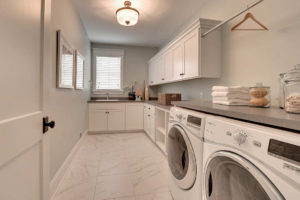 Brightening fabric. You can avoid bleachers by brightening your fabric with vinegar. Add a ½ cup to your washing machine during the rinse cycle.
Brightening fabric. You can avoid bleachers by brightening your fabric with vinegar. Add a ½ cup to your washing machine during the rinse cycle.- Repel lint. you can prevent lint from sticking to your clothing when you use vinegar during your wash cycle.
- Whitening dingy socks. Combine vinegar with hot water in a bucket and soak your socks overnight. Wash and rinse them the next day.
- Unclog hoses. Pour 1-2 cups of vinegar into your washing machine often without clothes and run a cycle. This will help unclog hoses by reducing soap scum.
- Removing stubborn stains. In case of coffee or fruit stains, apply vinegar on those spots before washing them.
- Removing odors. You can remove smoke smell on your clothes by spraying vinegar on them.
- Improve wool or cotton quality. For fluffier blankets, add one cup of vinegar to your rinse cycle.
- Prevent de-coloration. For clothes that run color during wash soak, soak them first in the vinegar solution before washing.
- Eliminate grease. You can also remove grease on a material by dabbing vinegar on them before washing as directed.
- Prolong nylon longevity. When washing nylon fabric, add vinegar to your washing machine.
- Unclog your steam iron. Mix a vinegar and water in a ratio of 1:1 into your iron’s water chamber. Turn it and let it sit in an upward resting position for around 10 minutes then let it cool. Change the water to eliminate particles and deposits.
- Clean washing machine. run full cycles with 2 cups of vinegar in the water without detergents and clothes.
- Spray away wrinkles. You can get rid of the wrinkles out of your fabric after drying by spraying a solution of vinegar and water in a ratio of 1:3 parts. After that, let it air-dry.
- Cleaning pen-ink stains. You can treat pen ink stains with white vinegar by applying a paste of 3 parts cornstarch and two parts vinegar. Allow the past to dry before washing the cloth.
Uses of Vinegar In the office
Want to keep your office and computer clean? Use vinegar to:
 Clean office supply. You may have realized that from the printer to the fax machine, your items tend to pick dust. A spray bottle will easily damage the equipment. It’s simple, make a dilute vinegar solution and dampen a cloth then use it to wipe the equipment.
Clean office supply. You may have realized that from the printer to the fax machine, your items tend to pick dust. A spray bottle will easily damage the equipment. It’s simple, make a dilute vinegar solution and dampen a cloth then use it to wipe the equipment.- Clean your keyboard. The keyboard picks dirt and may end up becoming faulty. Just dip a Q-tip into a vinegar solution and ensure you clean even the tightest spaces.
- Erase Pen. You don’t have to stress over a mark on the desk or wall. You can easily wipe using vinegar.
- Unstick your scissors. Yet another way to use vinegar is to clean your rusty scissors. Dip a rag in vinegar and wipe them.
- Brighten up your room. Do you want your dirty windows to be crystal clear? Dip a clean cloth in a vinegar solution and wipe them clean.
Uses of Vinegar In the Living Room
 Eliminate water rings. To get rid of ring mark on wood furniture, mix olive oil and vinegar and wipe using a soft cloth.
Eliminate water rings. To get rid of ring mark on wood furniture, mix olive oil and vinegar and wipe using a soft cloth.- Clean your piano clothes. Let your piano keys sparkle by applying some vinegar.
- Get rid of carpet stains. Use a mixture of salt and vinegar and apply it on your carpet and leave it to dry. Finish by vacuuming the area.
- Brighten the bricks. Your brick fireplace needs some cleaning. Take a bucket and mix water and vinegar. Wipe each brick carefully.
- Revamp wood paneling. In a mixture of vinegar (4 tbs.), Olive oil (2 tbs.) and water (1 pint), soak in a cloth and wipe.
- Hide the scratches on wood flooring. Is your tabletop or flooring full of scratches? Combine vinegar and iodine and use a small brush to paint over the area. The amount will depend on the shade. Use more iodine on darker woods.
- Restore leather furniture. Over time, your leather furniture leather may fade, combine vinegar and linseed oil and clean the furniture using a cloth dipped in the solution.
- Clean up candlewax. Begin by blow drying the area, then wipe away with paper towels. Clean the rest with diluted vinegar.
Wipe your blinds. Ever been blinded by dust when sunlight hits your blinds? Create a dilute solution of vinegar. Using cotton gloves, cross your fingers across and collect the dust.
But while vinegar is a magical all-purpose cleaner, you should avoid using it on these surfaces:
- Marble and Granite floors. Vinegar has acetic acid which etches the natural stone. Try using a mild cleaning liquid instead.
- Egg Stains. Mixing egg and vinegar can cause coagulation and hence may lead to a worse stain.
- Clothes iron. While some advice pouring vinegar through clothes iron, it may result in damage.
- Hardwood floors. Opinions differ on whether vinegar can be used on hardwood floors. So it’s better using special hardwood cleaner instead.
- Certain stains. Some stains don’t respond well to acid. These include grass, ice cream, ink, and blood.
Does vinegar lose acidity over time?
Yes, this is due to two possible reasons. First, vinegar is capable of absorbing water from the air which may dilute its concentration. Secondly, acetic acid loses its stability over time and decomposes.
Therefore, it’s recommended that you use fresh vinegar for pickling and canning purposes. Older vinegar may be have lost its properties as may not be ideal for canning. Note that it still works impressively for other purposes.
Uses of Vinegar In the Kitchen
Vinegar is very handy when it comes to the kitchen and its tough spots.
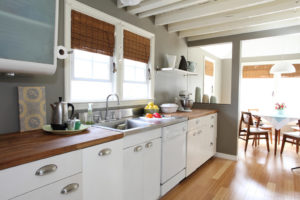 Unclogging drains. Flush the drain using hot water, then funnel half a cup of baking soda. Follow it up with a cup of vinegar and voila!
Unclogging drains. Flush the drain using hot water, then funnel half a cup of baking soda. Follow it up with a cup of vinegar and voila!- Deodorize your sink. If you want to get rid of a nasty smell or deodorize, follow the same step used in unclogging the drain.
- Cleaning stainless steel. Spritz the item or surface with vinegar and then dab with a clean cloth
- Get rid of smoke or burnt odors. Place a bowl of vinegar in your kitchen or the smelly room. The vinegar will get rid of all that smell.
- Cleaning and deodorizing your fridge. Mix equal parts of water and vinegar, use a sponge, dip in the mixture and wash the surface, door gasket and bins. If you are dealing with a case of mildew growth, clean with undiluted vinegar. Undiluted vinegar will also help when dealing with grime accumulation in the fridge. After cleaning, you can leave an opened pack of baking soda inside the fridge to keep it smelling fresh and clean.
- Cleaning the microwave. Place a bowl with the mixture of water and vinegar in the microwave, then heat. Once it has cooled down, wipe the inside with a clean cloth.
- Freshening lunch boxes. Soak a sponge with vinegar and place it in the lunch box, leave it overnight then rinse in the morning.
- Polishing brass, copper, and silver. Make a paste of baking soda and vinegar to clean items made of brass, copper or silver.
- Disinfecting cutting boards. Sprinkle baking soda on the surface of your cutting board then spray it with undiluted vinegar. Wipe it down with a clean cloth after 10 minutes.
- Cleaning ice cube trays. Pour undiluted vinegar into the trays and let it sit for about three hours before rinsing.
- Freshening vegetables. Mix a tablespoon of vinegar with 3 cups of water and use it to soak wilted veggies.
- Cleaning your coffee maker. Mix 1 part of water and 2 of vinegar and run it through your coffee maker. It is advisable that you repeat the process after every 50 cycles or so.
- Canning of taps. If you have hard water stains on your faucets, drape a cloth that has been soaked in vinegar.
- Debugging vegetables. Before preparing your veggies, soak them in a bowl with a mixture of salt, water, and vinegar. It will float the bugs to the top.
- Cleaning grease in ovens. Moisten a cloth with vinegar and water and use it to clean the oven.
- Cleaning the dishwasher. Run 2 cups of undiluted vinegar through your dishwasher at least once a month. Related article: 5 Easy Steps to Clean Your Smelly Dishwasher
 Making your glassware sparkle. If your drinking glasses have spots due cleaning with hard water, soak them in equal parts of water and vinegar for half an hour. Use a bottle brush to clean, then rinse them clean.
Making your glassware sparkle. If your drinking glasses have spots due cleaning with hard water, soak them in equal parts of water and vinegar for half an hour. Use a bottle brush to clean, then rinse them clean.- Descaling your kettle. Put 4 cups of vinegar on your kettle, then let it sit overnight. Drain and rinse meticulously in the morning.
- Scrubbing pots and pans. Make a paste of vinegar and equal parts of salt and flour. Scrub then rinse.
- Sanitizing glass jars. For those who reuse containers and jars or are planning to, don’t let the smell of the previous food deter you. Fill them with equal parts of hot water and vinegar. Let it sit for close to half an hour, then give it a thorough cleaning and rinse.
- Cleaning a rusty coin or opener. Soak the rusty coin or opener in vinegar, after all the rust has been cut through, wipe it clean.
- Eliminating bugs from the pantry. Place a bowl of vinegar with drops of peppermint essential oil in the pantry. It will attract insects. After a week remove it and wipe the shelves with diluted vinegar and a cloth.
Other uses of vinegar
- Peeling off wallpaper. Mix equal parts of water and vinegar and spray on a stubborn wallpaper. Scape it away.
- Slow down the hardening of plaster. When mixing plaster and you would like some extra time, splash it with white vinegar.
- Removing calcium. When it comes to removing calcium deposits, vinegar will do the trick. And so is lime.
- Spritz vinegar around the pool to keep insects and flies out of it.
- Restoring scuffed shoes and bags. Soak a cloth in vinegar then wipe the scuffed shoes and bags.
- Cleaning your glasses. Put a drop of vinegar on a cloth and use it to clean your glasses naturally.
- Reducing dust on plastic. Wiping down a large area of plastic with vinegar will make it static hence reducing accumulation of dust.
- Loosening glue. To get rid of old, hard glue from chair or table joints, apply vinegar.
- Reducing soap bubbles. To enhance the cleaning strength and reduce bubbles in your steam cleaner, use some vinegar
- Soaking wicks. To help propane lanterns burn longer and brighter, dip wick for a couple of hours and then let it dry.
- Getting concrete off the skin. Construction workers can use undiluted vinegar to wash dry cement, then follow it up with soapy water.
Conclusion
There are many uses of vinegar and its versatility makes it a must-have at home. You can add more uses of vinegar you may know in the comment section below.
